No such thing as bad weather?
I want to thrive not as an act of resistance, but simply because I am 60 years old, and I don’t want to give away what’s left of my life waiting for some better time that might not come before I go
I went on a picnic last month. Yes, that shiny stuff around the campfire pit is ice, and that’s snow on the ground under the trees. We were a few feet away from a frozen lake.
I was in Sweden, doing as the Swedes do: We bundled up, went outside to experience nature, and later went back inside to have fika. I’d show you photos of fika, but I think the first rule of fika is that you don’t take photos of fika. Because fika is about being present with another human, a hot beverage, and a nice treat. It’s about connection, rest, and replenishment. It’s a staple of Swedish culture.
I was visiting my daughter and her Swedish husband, who are both full-time students in their late mid-20’s. What struck me most about their life is how healthy it is. They have time to sleep for at least eight hours every night. They have enough time and money to prepare healthy food at home. They belong to social organizations that meet regularly. They walk and bike most places they need to go. They have freakin’ hobbies. Their days contain a balance of school, study, sleep, fun, and the work of maintaining a life (cleaning, cooking, laundry, and other chores). We had fika every day I was there.
I do not know any student or working person in the US who is able to live this way. (I’m sure they exist; I’ve just never known any.) So many of us, no matter our age, struggle with debt, lack of affordable housing, daycare, eldercare, healthcare, and thin/breaking/non-existent social supports. Unlike most students here, my daughter and her husband benefit from free tuition, a living stipend, subsidized housing, high-quality healthcare, and a society that prioritizes well-being for everyone.
I am profoundly happy for my daughter, grateful for the opportunities available through her adopted country,1 and envious and sad when I think about how life could be different for us in the US. About how my specific life might be different if my daughter could live the same way here that she can there.
One morning after I returned home, I sent my daughter a text:
If you fika by yourself is it still fika?
She said she’d say yes, but that the social nature of fika is an important part of it. I knew this.2 Most of my friends, though, are working, and our ways of working and living in the US don’t support us having fika together the way Swedes have fika. I tried fika-ing alone, but it didn’t feel the way it had felt in Sweden, with my daughter and members of her new family.
Soon after, I came across Cody Strahm’s essay “We Tried Living Like Europeans in the US.” In it, he describes differences in lifestyle he and his wife experienced on extended stays in European countries: more exercise, more connection with other people, healthier food. Both enjoyed measurably improved physical and mental health after living and working there for 2 months.
Acknowledging the difficulties of moving abroad and not wanting to leave the home they felt committed to in the US, Strahm and his wife decided to try living a European lifestyle here. I was really hoping the essay would show me how to do that.
Sadly, it did not. Instead, the essay explored why their experiment failed: different norms, infrastructure, and values. As much as Americans love the idea that we’re all in charge of our own destinies, so much of anyone’s life is shaped by the place they live and the people they live amongst. Strahm found that, “To live a European lifestyle in America is a lonely endeavor. It is swimming upstream, glaringly out of place.”
I was disappointed, but not entirely surprised. I remembered a trip to Italy I took with my young family two decades ago, where I felt comfortable in a bikini for the first time ever. We spent a lot of time on or near the water, and most women, regardless of age or size, wore two-piece bathing suits, something I never saw at home. I swore that when we returned I was going to continue to wear the suit I bought there. I thought the problem was something I could overcome through my own mindset, and that if I just wore my suit with confidence and my new understanding, I could feel as free at home as I felt in Italy.
I did not.
I tried, but I wasn’t comfortable. No one ever said anything about how I looked or what I was wearing. It was just different here, and I felt it.
In Sweden, people like to say that there is no such thing as bad weather, only bad clothing. It’s an attitude born of living through long, dark, and cold winters. It’s an attitude that says it is possible to thrive in difficult conditions. It suggests that it’s essential to accept reality without judgement of it and control what you can within it.3
I’ve been thinking a lot about what might be metaphorical “good clothing” for those of us living through a dark and cold season. (Which feels like everyone right now, even though it’s full-on spring in the northern hemisphere.) Simply adopting the ways of other people and places is not the answer—they won’t work here the way they do there—nor is putting our heads down and pretending that the weather is something that it’s not. That’s a good way to go mad or get frostbite, I think.
As I, along with so many of you, are trying to read and understand the emerging landscape of now, I want to acknowledge the weather of the time and place I’m living in, and figure out how to not just survive it, but to thrive in it.
Emigrating elsewhere is not a realistic option for me, and I’m not going to pretend that anything I might do here will feel the way it would if I were doing it somewhere else. Riding my bike and partaking of fika (in whatever form I can manage) is not going to compensate for lost rights, rising hate, wide-spread economic insecurity, and legacies of violent injustice. It will not keep me safe from our authoritarian government’s deregulation and agency gutting and subsequent impacts on our food supply, water, transportation, public health, and education.
I’m also not planning to go out and buy a two-piece suit and say to hell with provincial, misogynistic, Puritanical attitudes that make women feel they need to cover up their bodies. I could do that, or something that is the equivalent of that, and I could try to will myself to feeling the way I want to feel, but I know that I won’t. The best I might do is wear that suit in spite of how things are here, in spite of how people in this culture and time and place feel about a 60-year old woman with the kind of body that ordinary 60-year old women have wearing a two-piece swimsuit in public. I could wear it as resistance and protest and assertion—and maybe at some point I will decide to do some things for those reasons—but I won’t pretend that it will feel the way I wish it would, or that it will restore the things we’re losing and have lost or right the wrongs we’ve always lived with. I think it might be an example of wearing bad clothing for the weather. For me, at least, today.
These are not solutions that will cultivate thriving here, and, yes, if it’s possible, I want to thrive. Today. Full stop. In spite of (waves arms wildly) everything. I want to thrive not as an act of resistance, but simply because I am 60 years old, and I don’t want to give away what’s left of my life waiting for some better time that might not come before I go. Since none of us ever know how many years we have left, this stance, I think, is valid for anyone at any age.
Last week, my husband and I went on a picnic. It was a balmy spring evening. We found a spot overlooking a water reservoir. The grass was filled with tiny daisies. There was sun, but not too much. There was a breeze, but not too strong. There were people, but not too many. I didn’t have to worry about keeping my footing on ice. I didn’t have to bundle up. My butt didn’t go a little numb while we sat and shared our meal.
As picnics go, it was picture-book perfect. Idyllic. Easy. I savored every minute of it. It felt a lot like how we think thriving should feel.
But here’s the thing I realized while the sun was warm on my face: If I only picnic when conditions are perfect and easy, I’m not going to get to enjoy very many picnics. Also, it was a different kind of nice than the frozen-lake picnic I enjoyed last month in Sweden. Almost like two different pleasures, entirely.
That picnic we shared in Sweden, it was cold. It was beautiful, but a different kind of beautiful than our spring picnic. I was glad for it, and I enjoyed it as much as I enjoyed last week’s picnic, but it was harder than a spring picnic; it would have been easier to simply stay inside. I had to choose the joy, had to choose that cold kind of beauty. I had to borrow the right kind of clothing and bundle up. We had to build a fire. I had to be open to the kind of pleasure that was available to me there, in that place and at that time.
Look, I know there is such a thing as bad weather. Some weather we can’t survive, much less thrive in, no matter our clothing. I don’t want to pretend otherwise. And we’re not all living in the same climate, even if we’re living in the same country, and we don’t all have access to the same kinds of protection. I don’t want to deny that, either. Perhaps the Swedes can have the attitude about weather that they do because of all the shelters they’ve built for each other, the kinds of shelters we don’t have here.
Still, the understanding that picnic is giving me—of the choice available to seek joy and beauty regardless of the weather and other conditions I can’t change—that’s a takeaway I’ve brought home from my visit, a souvenir I will try to find a place for in my life here.
Starting with fika, in whatever way I can have it. Because some kind of fika is better than no fika, always.
This is one I’m hoping will spark some conversation. I know that some of you have never lived in the US. Some once lived here but have made your life elsewhere. Some of you are thinking about leaving the US, or are in the process of doing it. Some of you, like me, anticipate living out your lives wherever you are, no matter what happens (whether you want to or not). And I know that the ideas I’ve shared here can be applied to adapting to the range of challenges that many of us are navigating: aging, grieving, disability, chronic pain/illness, neurodiversity, caretaking, and more.
I would love to share our collective understanding and knowledge about the idea of thriving no matter what. When is it possible and when is it not? Are you doing it? And if yes, how? What works and what doesn’t for you? And if no, what are your barriers?
If you enjoyed this essay, please give it a heart ❤️ or share it in your social circles. Doing that helps make my work visible to others, and it helps me feel that creating it is a good use of my time. Thanks so much.
Oh, and if you’re not a subscriber, I hope you’ll become one! You’ll get an essay every few weeks or so. I don’t do chats or other such things, so minimal inbox clutter will be coming your way from me.
And here is where I feel obligated to add this: Immigration, even under the best of circumstances, is never easy. There is also, always, no matter how ideal the circumstances, profound loss (and accompanying grief), for both those who leave and those who are left behind.
Fika is more than a coffee break. It’s a daily custom built into the fabric of Swedish work and home life, and it embodies values of community and balance. You can get a quick overview here: https://www.campervansweden.com/blog/about-sweden/fika
Another obligatory add: This does not mean accepting terrible situations in which you have the power to make change. (Insert the Serenity Prayer here.) It does not mean you can’t have feelings and make judgements. I think it means that our feelings and judgements won’t change the weather (reality), so they are not the most useful or important facts about how to be OK in it.


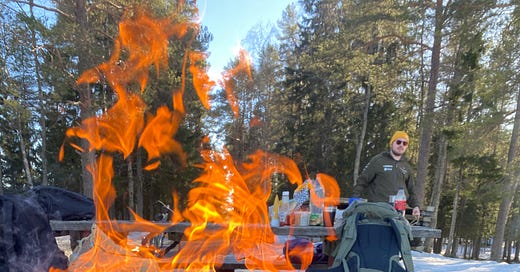



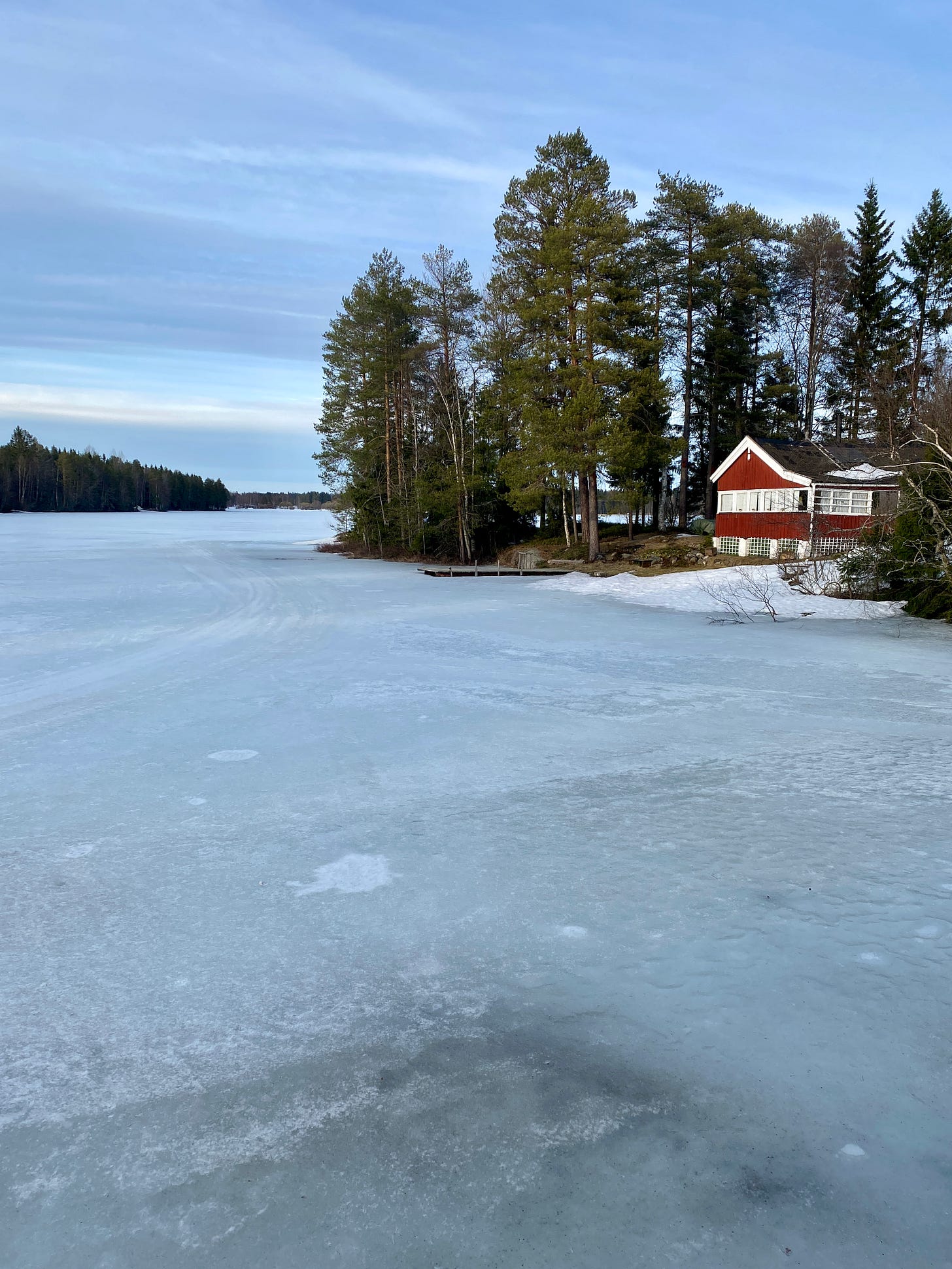
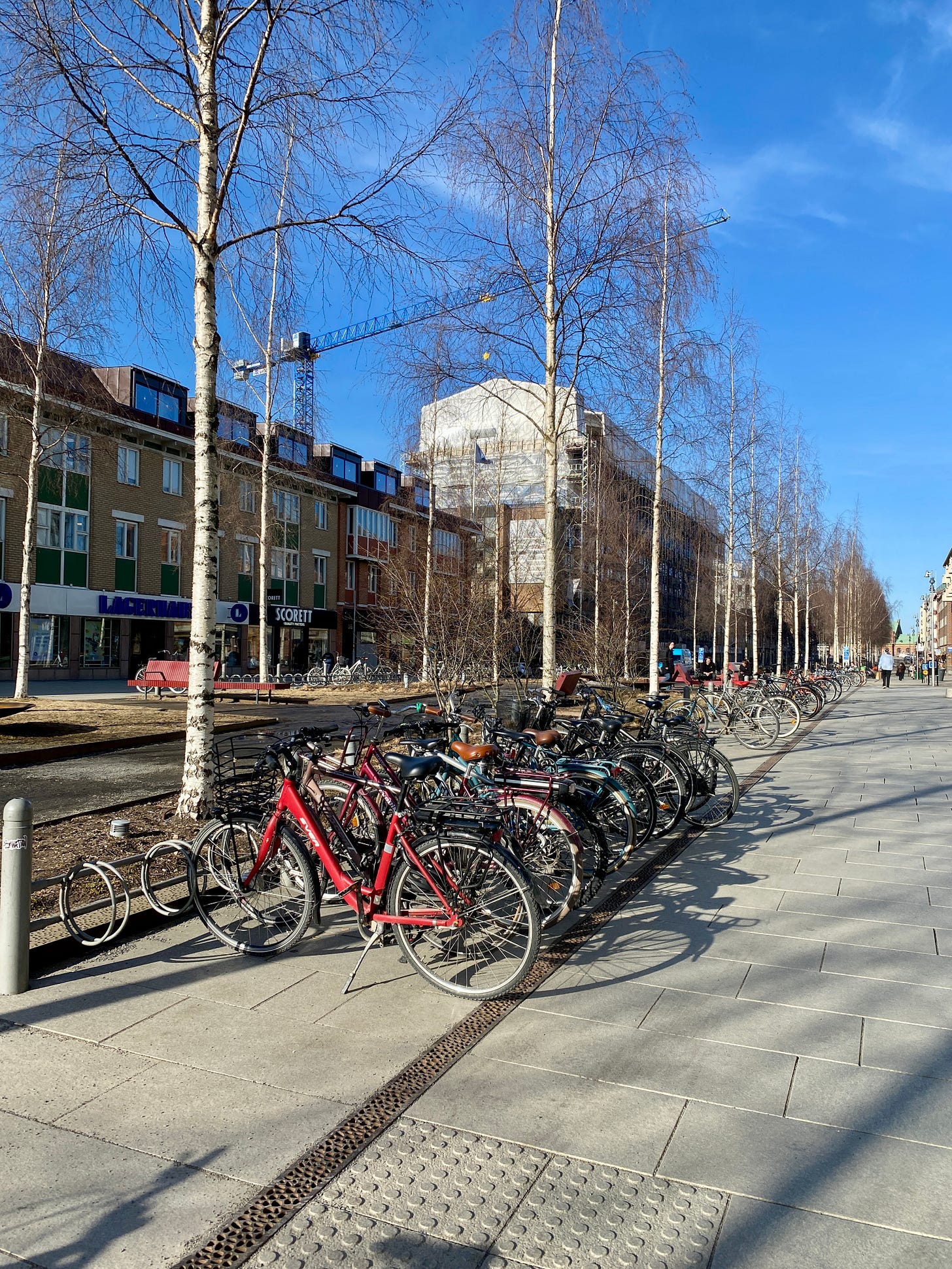
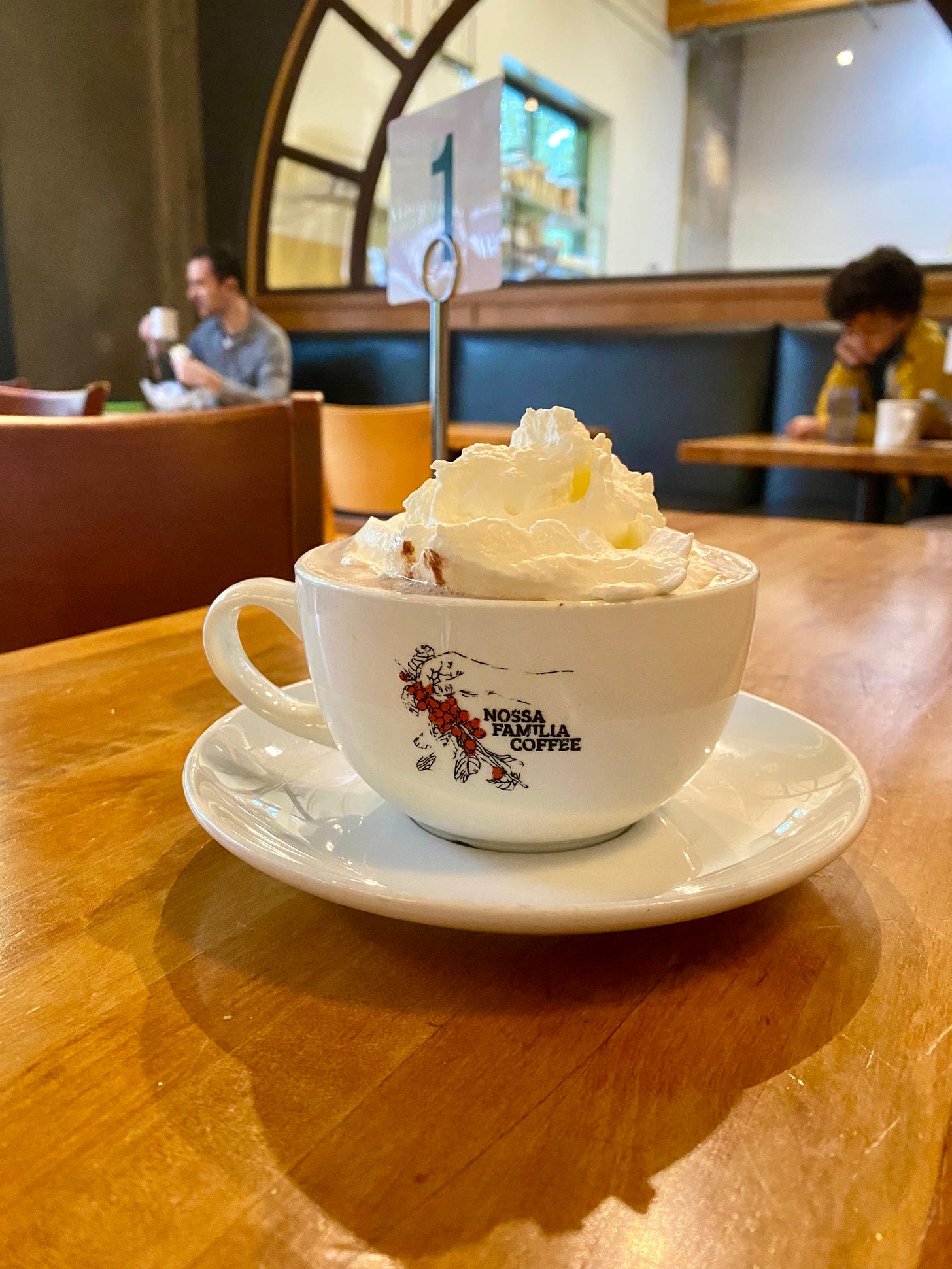
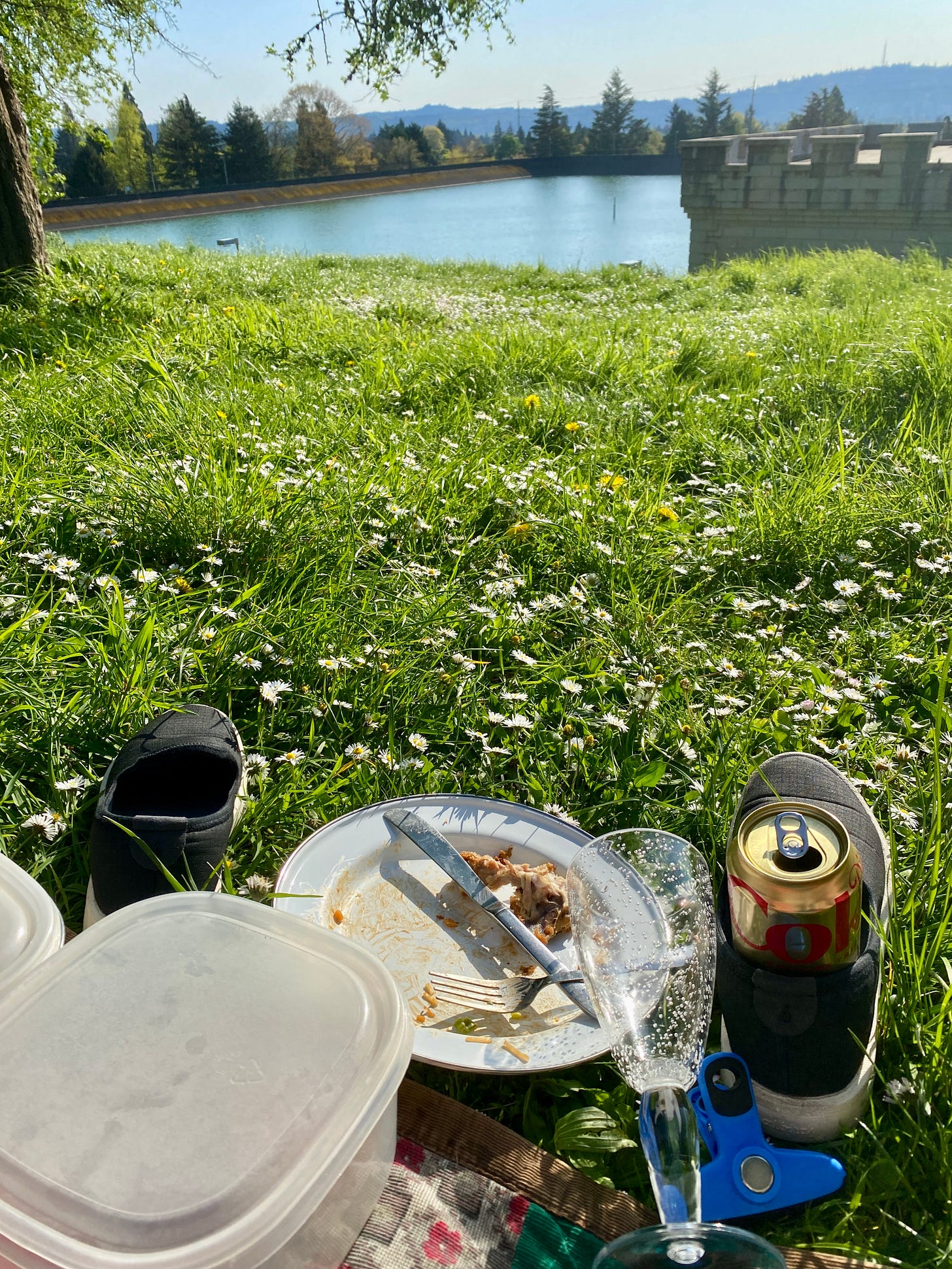
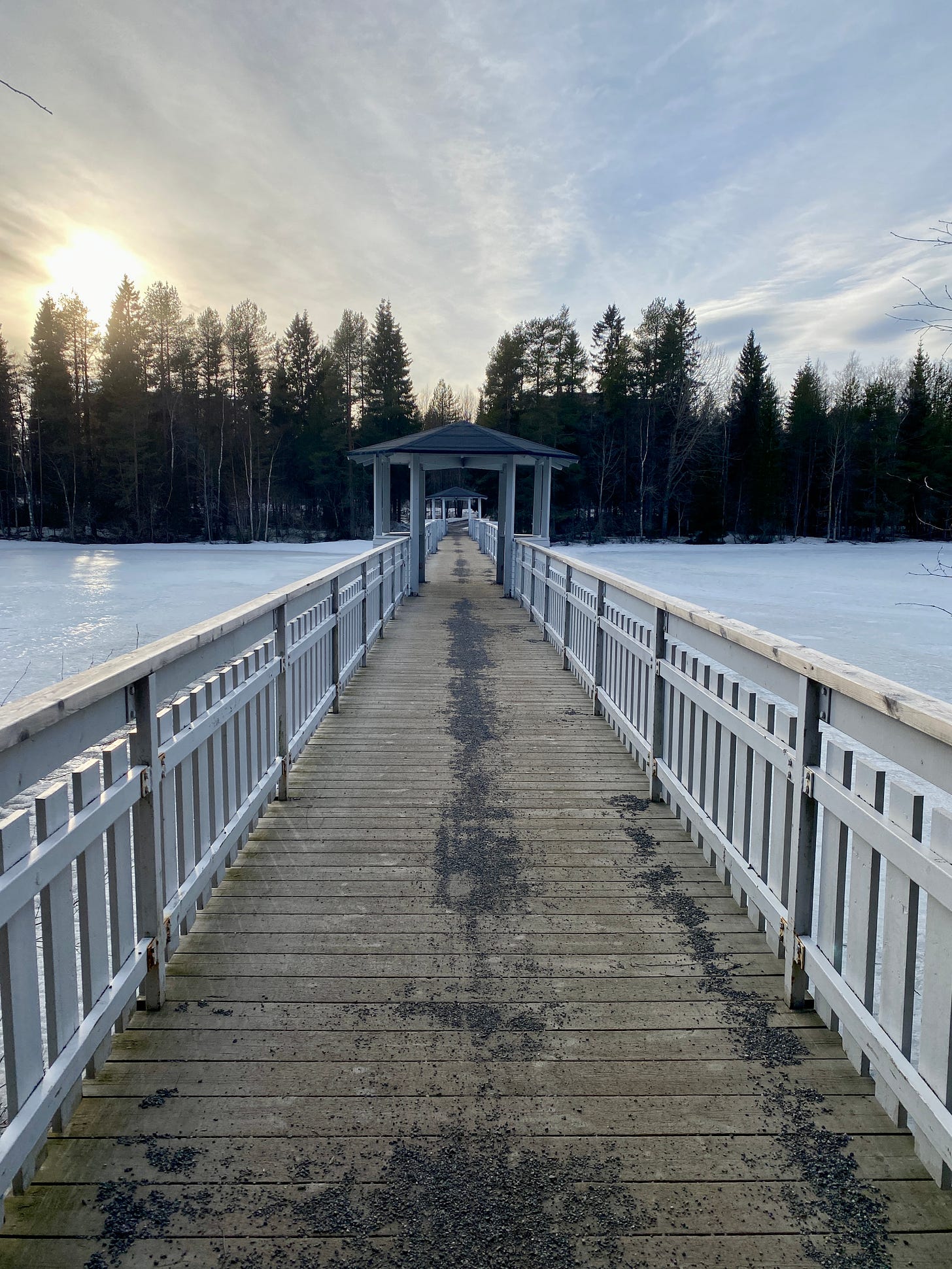
Communing with you here—in this way, at this moment— feels sustaining and like a treat amidst the ashes. It feels like the fika I can hope for and, yes, ENJOY right now. I love hearing about your time with your child and I must admit, it sounds like a mythical kingdom, which is equally compelling and alarming. I am so thrilled for them to have that reality and equally horrified at how it sounds as possible as a flying dragon taxi service here.
Your piece and your stance make me see that I have chosen to show up as the reality I want out of expedience, personal necessity of the moment, and a sense that time is short and waiting for ideal conditions is a luxury/ delusion I can no longer afford. I am doing this in safe spaces now because my personal reservoir is in drought conditions, but the more I live in that way the more it seems impossible not to. Like the balance has toppled and living any other way feels false and now requires more energy than just letting go and accepting the climate, geography, system in which I live and exist. I am my own micro climate — maybe that is what those of us in inhospitable zones can hope for— not as struggle but as the zone in which me most thrive. And a place others might, too.
What a wonderful and chewy post!
Thriving at 60 and beyond has occupied much of my thoughts lately. How does one do that in the current environment and as a single woman before I can retire from an educational system that does not change. Thank you for the essay and the thought provoking questions it inspires.